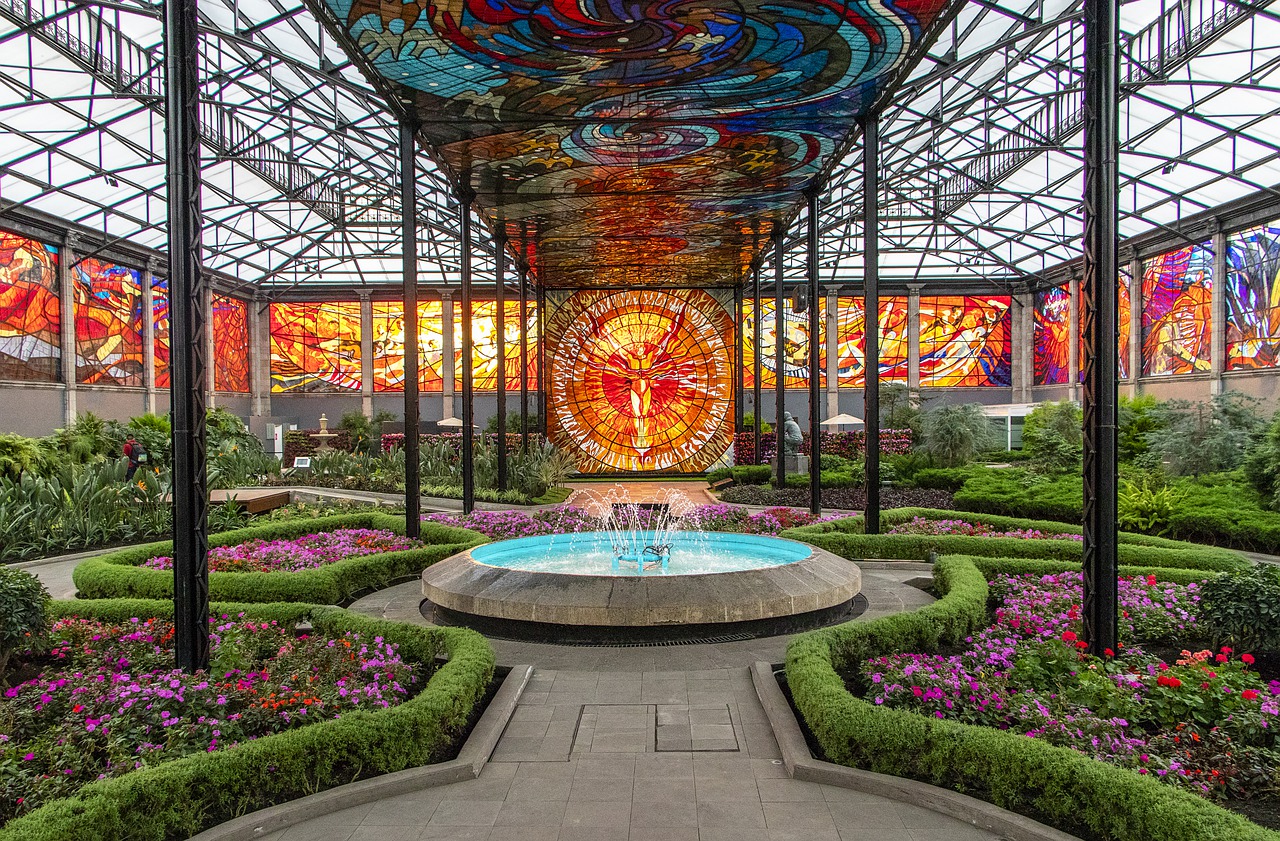
The inception of punk subculture dates back to the mid-70s in the U.K. and the U.S., an era defined by teenage rebellion, political disillusionment, and economic hardship.
Since then, punk has moved beyond the world of music—entering into literature and art in the form of cyberpunk, steampunk, and other “punk” subgenres, largely defined by their cynicism and nihilistic perspectives on the future.
Solarpunk, a new punk subgenre, sets out to change that mindset.
Filled with optimism and hope for a more sustainable future, solarpunk blends tech with renewable energy and green, zero-waste living. And, with its Edwardian aesthetics, art nouveau-styled tech, and green-space inspired architecture, it’s honestly the dream aesthetic you never knew you needed.
The Origins of Solarpunk
The origins of solarpunk are murky, with futurist writer, Adam Flynn, claiming in an interview that the term solarpunk has “been coined independently half a dozen times” given its easy analogy to the phrase steampunk.
The movement largely began in non-English speaking cultures, with a 2012 Brazilian sci-fi anthology entitled,Solarpunk: Histórias ecológicas e fantásticas em um mundo sustentável noted as one of the earliest mentions of the term.
The concept first gained traction within English-speaking countries in 2014, in a viral post written by Tumblr user, Miss. Olivia Louise. In the post Miss. Olivia Louise writes,
“But what I want to see is Solarpunk—a plausible near-future sci-fi genre, which I like to imagine as based on updated Art Nouveau, Victorian, and Edwardian aesthetics, combined with a green and renewable energy movement to create a world in which children grow up being taught about building electronic tech as well as food gardening and other skills, and people have come back around to appreciating artisans and craftspeople, from stonemasons and smithies, to dress makers and jewelers, and everyone in between. A balance of sustainable energy-powered tech, environmental cities, and wicked cool aesthetics.”
Since 2014, solarpunk has grown from a flip comment made by few to a burgeoning trend and genre in the world of literature and art—one that puts sustainable thought and ecological action at the forefront of its genre.
What is Solarpunk?
Due to the newness of the term, there is no formal definition yet of the term “solarpunk.” The majority of definitions come from eco-blogs and fandom accounts such as TVTropes.org, which describes it as “a genre of speculative fiction that focuses on craftsmanship, community, and technology powered by renewable energy, wrapped up in a coating of Art Nouveau blended with African and Asian aesthetics.”
Other key aspects of the genre include a mixture of bright and natural colors, egalitarianism, renewable energy (mostly solar), and architecture that weaves together tech / art and green spaces.
Solarpunk’s main focus centers on subverting the current system (hence the suffix ‘punk’) to allow for a co-creation between environmental and technological growth for a better, more sustainable future.
While still a growing movement, commonly cited examples of the solarpunk genre in media include Treasure Planet (for its solar-powered sails), WALL-E (for its return to environmental care), Zootopia (for its urban green spaces), and Black Panther (for its Afrofuturist aesthetic and use of renewable energy).
A Genre Influencing Reality

Comovitral in Toluca, Mexico
Beyond fiction, the solarpunk movement is also making strides in reality, influencing the ways humans develop livable spaces and new technology.
In line with the ideals of solarpunk, the Cosmovital Botanical Gardens in Toluca, Mexico is a real life depiction of infusing nature into already existing urban spaces. Formerly an art nouveau-inspired market, the space has since been transformed into a botanical garden surrounded by a massive stained-glass mural.
Solarpunk enthusiasts on Reddit list other examples of solarpunk in real life such as Copenhill, the urban rooftop garden and ski slope in Copenhagen, Denmark, the overall city layout of growing urban spaces in Colombia and Singapore, the Findhorn Ecovillage in Findhorn Scotland, U.K., and Atlanta, Georgia’s free food forest.
The Societal Impact of Solarpunk
Beyond being colorful, eco-friendly, and aesthetically pleasing, solarpunk also represents a necessary societal shift away from environmental domination and toward environmental co-creation. Rather than trying to tame and diminish natural spaces, solarpunk encourages the flourishing of green spaces integrated with human-dominated spaces.
According to the WHO, green spaces in urban settings improve air and water quality, buffer noise pollution, and reduce environmental health risks from living in urban settings. Mental health benefits include reducing stress, improving social interaction, increasing overall physical activity, and furthering community cohesiveness. When policy makers and urban planners put natural green spaces and sustainability at the forefront of their designs, they are investing in their community’s overall wellbeing as well as the well-being of the planet.
Solarpunk’s “hope as rebellion” perspective is exactly the type of ideological thought needed in a growing world of climate anxiety and ecological crisis. Although still a growing movement, there’s nothing dreamier than a world where humans can re-discover how to coexist with nature all the while pushing the boundaries of tech. And I, for one, can’t wait to see it.
Also by Dana: All You Need To Know About Micro Goals & How They Result In Macro Change
Related: Why Afrofuturism Can Help Us All Right Now
Get more like this—Sign up for our daily inspirational newsletter for exclusive content!
__
Photo: Verse Lozano via Wikimedia Images; Comovitral in Toluca, Mexico via Pixabay




